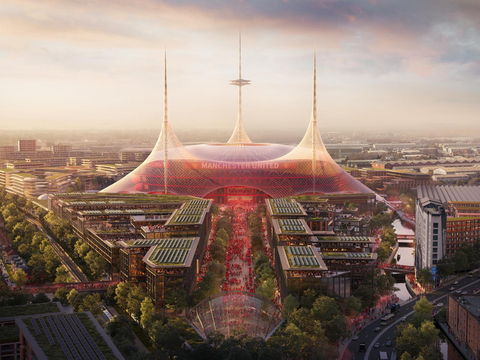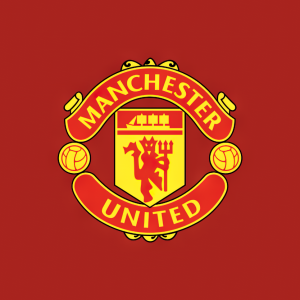Manchester United Backs Government’s Ambitious Growth Agenda With New Stadium Announcement

Conceptual images and scaled models of a new 100,000-seat stadium by Foster + Partners were unveiled on Tuesday (Photo: Business Wire)
The stadium, and wider regeneration project, have the potential to deliver an additional
Conceptual images and scaled models of what the new stadium and surrounding area could look like were unveiled on Tuesday by Foster + Partners, the architecture group appointed to design the stadium district. These will provide a masterplan for more detailed feasibility, consultation, design and planning work as the project enters a new phase.
Sir Jim Ratcliffe, co-owner of Manchester United, said: “Today marks the start of an incredibly exciting journey to the delivery of what will be the world’s greatest football stadium, at the centre of a regenerated Old Trafford.
“Our current stadium has served us brilliantly for the past 115 years, but it has fallen behind the best arenas in world sport. By building next to the existing site, we will be able to preserve the essence of Old Trafford, while creating a truly state-of-the-art stadium that transforms the fan experience only footsteps from our historic home.
“Just as important is the opportunity for a new stadium to be the catalyst for social and economic renewal of the Old Trafford area, creating jobs and investment not just during the construction phase but on a lasting basis when the stadium district is complete. The Government has identified infrastructure investment as a strategic priority, particularly in the north of
Omar Berrada, chief executive of Manchester United, said: “Our long-term objective as a club is to have the world’s best football team playing in the world’s best stadium. We are grateful for the feasibility work done by the Old Trafford Regeneration Task Force exploring options for the future of Old Trafford. We have carefully considered its findings, together with the views of thousands of fans and local residents and concluded that a new stadium is the right way forward for Manchester United and our surrounding community. We will now embark on further consultation to ensure that fans and residents continue to be heard as we move towards final decisions.”
The most successful manager in English football history, Sir Alex Ferguson, said: “Manchester United should always strive for the best in everything it does, on and off the pitch, and that includes the stadium we play in. Old
Lord Norman Foster, Founder and Executive Chairman, Foster + Partners, said: “This has to be one of the most exciting projects in the world today, with incredible regional and national significance. It all starts with the fans’ experience, bringing them closer than ever to the pitch and acoustically cultivating a huge roar. The stadium is contained by a vast umbrella, harvesting energy and rainwater, and sheltering a new public plaza that is twice the size of Trafalgar Square. The outward-looking stadium will be the beating heart of a new sustainable district, which is completely walkable, served by public transport, and endowed by nature. It is a mixed-use miniature city of the future – driving a new wave of growth and creating a global destination that Mancunians can be proud of.”
Lord Sebastian Coe, chair of the Old Trafford Regeneration Task Force, said: “Today marks an important step forward in what I firmly believe can be the biggest and most exciting urban regeneration project in the
Andy Burnham, mayor of
About Manchester United
Manchester United is one of the most popular and successful sports teams in the world, playing one of the most popular spectator sports on Earth. Through our 147-year football heritage we have won 69 trophies, enabling us to develop what we believe is one of the world’s leading sports and entertainment brands with a global community of 1.1 billion fans and followers. Our large, passionate, and highly engaged fan base provides Manchester United with a worldwide platform to generate significant revenue from multiple sources, including sponsorship, merchandising, product licensing, broadcasting and matchday initiatives which in turn, directly fund our ability to continuously reinvest in the club.
View source version on businesswire.com: https://www.businesswire.com/news/home/20250311091397/en/
Toby Craig
Chief Communications Officer
Toby.Craig@manutd.co.uk
Corinna Freedman
Head of Investor Relations
Corinna.Freedman@manutd.co.uk
Source: Manchester United plc





